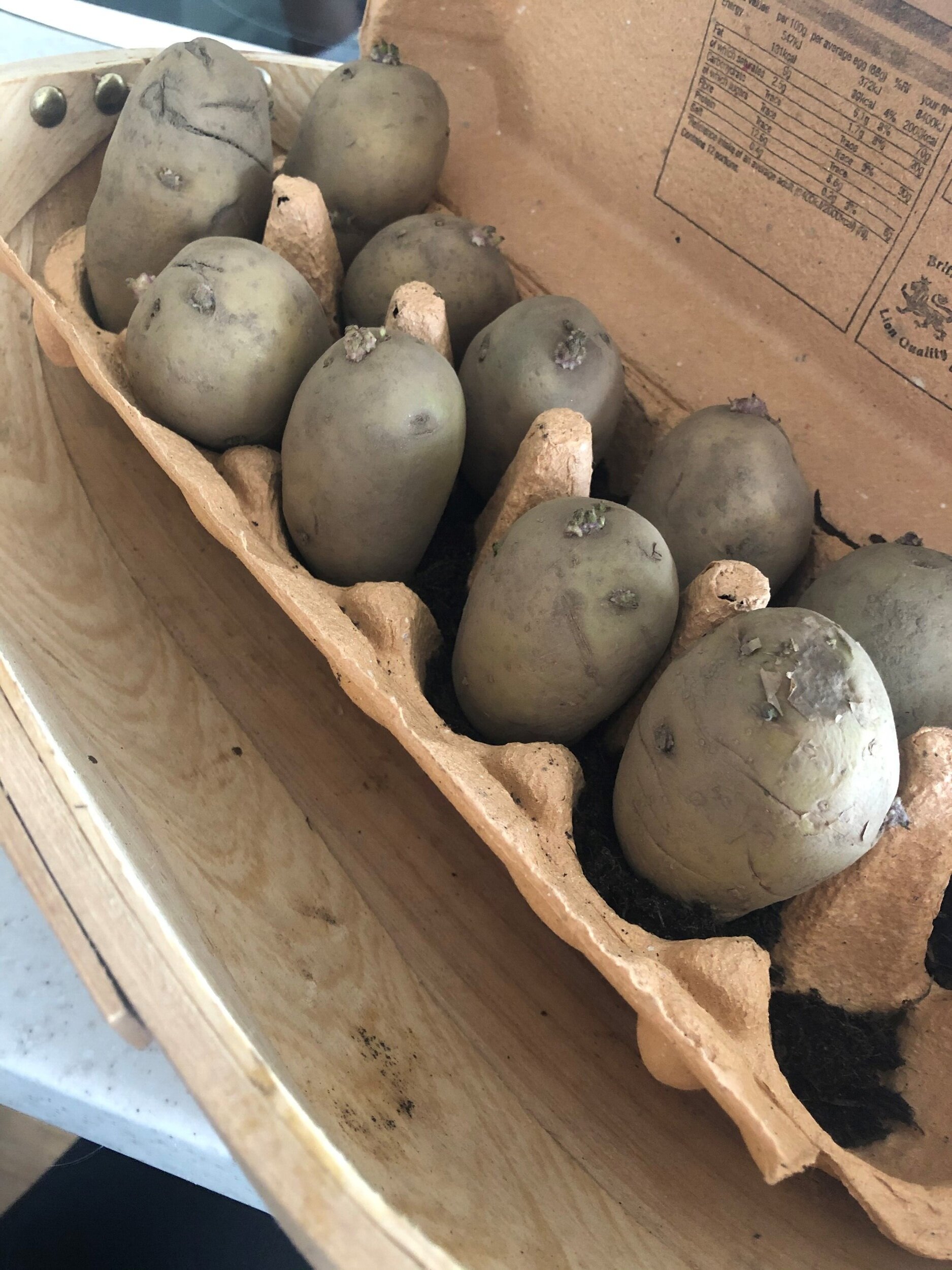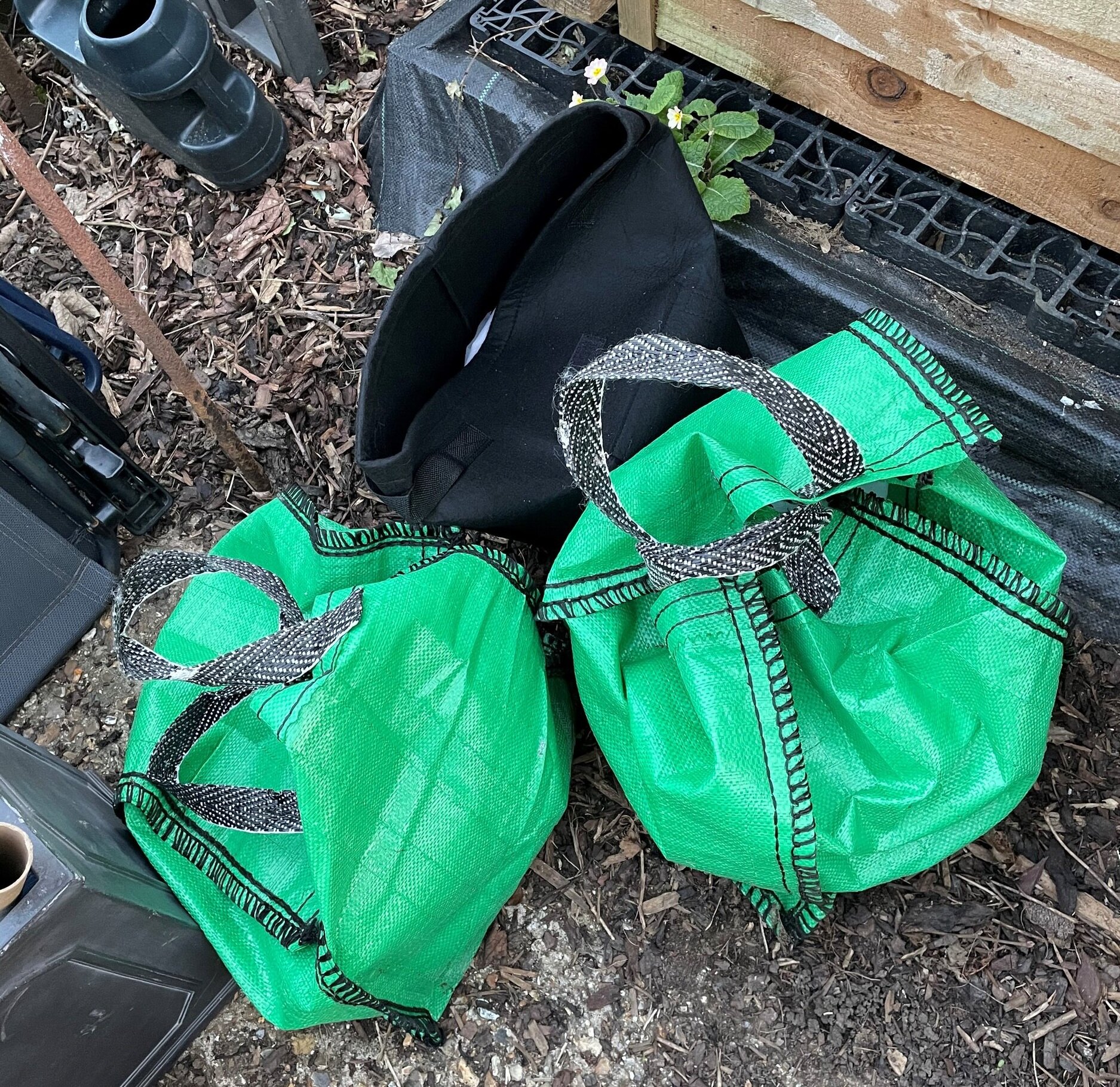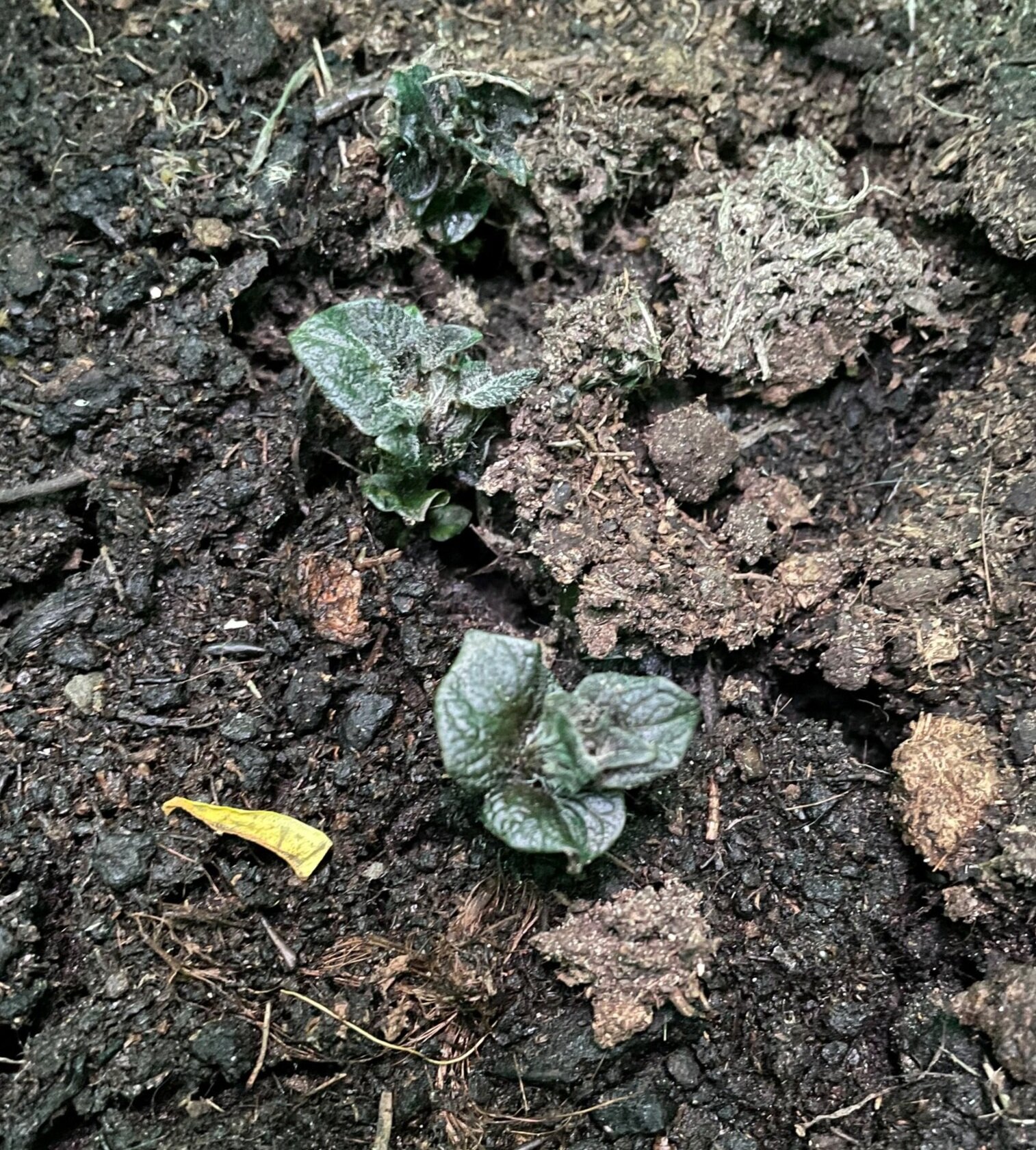What I Know About Growing Potatoes
Potatoes are pretty fun (and easy) to grow. You can grow them directly into the ground, in a raised bed, a potato sack, pots, a half empty bag of soil, or even a hessian bag for life, so really there is no excuse to not try this at least once! They need regular attention though, but growing them is easy enough in my opinion.
Growing potatoes is like a magic trick, and children will love being involved toot. You plant one seed potato and then dig up loads of potatoes a few weeks later! Better yet, potatoes are great for the soil – you shouldn’t replant potatoes in the same soil, but the soil at the end of each harvest can definitely be recycled elsewhere in the garden.
You need a little bit of space (even a balcony will do), some attention, water and a willingness to dig for the buried treasure at the end, what are you waiting for?
WHERE TO BUY POTATOES
You can buy ‘seed potatoes’ from garden centres, or plenty of online websites like Marshalls or Thompson & Morgan. As a beginner I’d recommend buying what they call ‘first or second earlies’. You will get to eat them quicker and they are ready to harvest before most blights hit. I love growing Charlotte potatoes (second early) as they are great all round potatoes and remain firm once cooked so they make perfect potato salad or boiled and eaten with melted butter. Other early potatoes you could try include Annabelle, Maris Peer, Milva, and Cherie. Or familiar main crop potatoes like Maris Piper and King Edward are all round winners too.
HOW TO CHIT POTATOES
Chitting potatoes was a new phenomenon to me, but a pretty important part of the process. To chit potatoes you need an empty egg box and space on your windowsill – and that’s it! Simply place a potato in each of the egg spaces and leave them open on your windowsill to get maximum sunlight. You are likely to be able to already see little ‘eyes’ where shoots will grow from, place the potatoes with as many eyes up as possible.
They will start to sprout (slowly), and each sprout should be quite dark in colour (usually purple). By comparison when you leave your shop bought potatoes in a dark cupboard and they sprout the sprouts are likely to be translucent.
Some potatoes will grow really long shoots, and others stay quite short, so don’t be disheartened. It can take up to six weeks to full chit potatoes and the shoots will get to 1-2cm long. Don’t worry if yours are shorter, they will still grow when you plant them, but successful chitting will give you a head start.
WHEN TO PLANT AND HARVEST POTATOES
My neighbour, who I get most of my gardening advice from, was taught by his dad that potatoes should be planted out on Good Friday. I actually did mine a bit earlier this year, and therefore needed to protect them from a couple of frosts, but I think Good Friday is a pretty good benchmark to go by as March and April are the perfect time to be able to harvest in the summer.
First Earlies (new potatoes) – plant in March (but protect from late frosts) and harvest in June/July
Second Earlies – plant in March/April (but protect from late frosts) and harvest in July/August
Main Crop – plant in late April and harvest August-October
HOW TO PLANT AND GROW POTATOES
The more space potatoes have the bigger the harvest, and bigger each potato will grow. In a potato growing bag I’d recommend a maximum of 5 (one in each corner and one in the middle). Place each potato with the shoots upwards, evenly spaced in your container or soil – as close to 30cm apart as possible if you can. Cover with 2-3 inches of soil or compost and give them a good water and leave. Remember you can place a layer of frost blanket or fold over the tops of the bags if there is a late frost you need to protect them from.
Keep them watered, and in lots of sunlight, and keep your eyes peeled for signs of growth. Every time you see a few green leaves peeking out from the top of the soil you will need to embark on ‘Earthing Up’ – which is simply adding more soil/compost to cover them up again. Each time you see the leaves add a couple of inches of soil on top, until you reach the top of the container or bag. At which point you can then let them grow as tall as they’d like – you’ll even see flowers growing out the top which is a great sign that things are growing well underneath.
WHEN AND HOW TO HARVEST POTATOES
Following the month as a guide, your potatoes will be ready from as early as 12 weeks after planting them, but some take 22 weeks. Flowers on potato plants are a great indicator that your potatoes are maturing, you will need to wait until the potato leaves have died back, which will mean the potatoes beneath have finished growing and can be harvested.
Harvesting potatoes is the fun bit, it’s like panning for edible gold, and great for children to get involved in too. If you’ve grown your potatoes in containers or bags, simply cut back all the growth at the top and then empty the contents onto a tarp, or into a wheelbarrow and start digging around with your hands to unearth all the potatoes! If you’ve planted them directly into the ground or into a raised bed then use a gardening fork to gently ease the plants out of the ground – but have a good rummage with your hands as well to make sure you’ve got them all!
HOW TO STORE POTATOES
Early potatoes are usually better eaten fresh and not stored for too long, but if you have grown ‘main crop’ potatoes like Blue Danube, Cara or Setanta, then you can store them straight from harvesting, for a few months so long as they are cool and dark. Keep your eyes on them and remove any that look like they are rotting so they don’t ruin the whole crop.
Lastly, don’t forget to thoroughly wash and scrub your potatoes before cooking them, and avoid eating any green potatoes.






